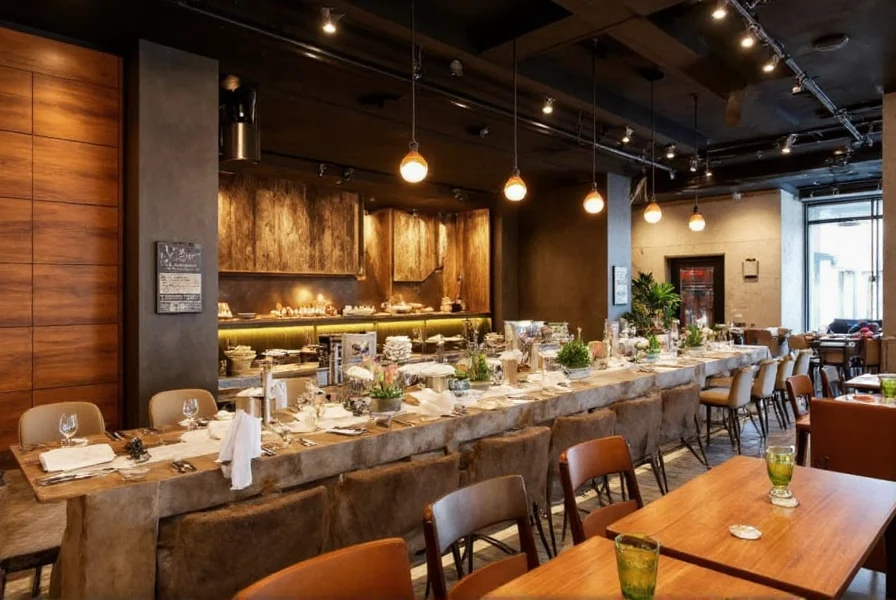When searching for dining options, understanding the geographical context is crucial for finding accurate information. Nagoya, located in Japan’s Aichi Prefecture, boasts a rich culinary tradition with signature dishes like misokatsu (pork cutlet with red miso sauce) and tebasaki (Nagoya-style chicken wings). Meanwhile, South Carolina represents an entirely different culinary landscape focused on Southern American cuisine.
Decoding the Search Query Confusion
The combination of “Nagoya” and “SC” creates a geographical mismatch that prevents locating a specific restaurant. This type of search confusion commonly occurs when:
- Users accidentally combine elements from different search sessions
- Autocorrect or keyboard errors alter intended search terms
- Users misunderstand location abbreviations (SC could be mistaken for a district code)
- Users seek Japanese restaurants named “Nagoya” in South Carolina
Authentic Nagoya Dining Experience
Nagoya’s culinary scene features several distinctive elements that set it apart from other Japanese cities:
| Dish | Description | Where to Find in Nagoya |
|---|---|---|
| Misokatsu | Pork cutlet served with rich red miso sauce | Yabaton, Misokatsu Imai |
| Tebasaki | Spicy, crispy chicken wings | Atsuta Shinsen, Daruma |
| Kishimen | Flat udon noodles in broth | Goemon, Yamamotoya |
| Doteni | Beef tendon stew | Local izakayas throughout the city |
These specialty dishes represent Nagoya’s unique food culture, which blends traditional Japanese techniques with local ingredients and flavor preferences. The city’s position as a manufacturing hub has influenced its hearty, substantial cuisine that satisfies workers in the automotive and aerospace industries.

Searching Effectively for Japanese Restaurants
When looking for authentic Japanese dining experiences, whether in Japan or abroad, consider these practical approaches:
For Finding Restaurants in Nagoya, Japan
Use precise search terms like “authentic Nagoya restaurants,” “best misokatsu Nagoya,” or “Nagoya specialty dining.” Major restaurant discovery platforms like Tabelog (Japan’s equivalent of Yelp) provide reliable reviews with filtering options for specific Nagoya dishes. The Sakae and Osu shopping districts contain concentrated restaurant areas worth exploring.
For Finding Nagoya-Style Restaurants Abroad
If seeking Japanese restaurants outside Japan that specialize in Nagoya cuisine, try search phrases like “authentic Nagoya-style restaurants in [your city]” or “Japanese regional cuisine specialists.” While most Japanese restaurants abroad focus on Tokyo or Osaka styles, some specialty establishments feature Nagoya dishes. In the United States, cities with significant Japanese populations like Los Angeles, Seattle, and Honolulu have the highest likelihood of featuring regional Japanese specialties.
South Carolina Japanese Dining Landscape
Regarding “SC” (South Carolina), the state has a growing but limited Japanese restaurant scene primarily featuring sushi and pan-Asian fusion rather than regionally specific Japanese cuisine. Charleston and Columbia have the most established Japanese dining options, though none specifically advertise as “Nagoya restaurants.”
When searching for Japanese dining in South Carolina, more effective queries would be “best Japanese restaurants in Charleston SC” or “authentic sushi restaurants South Carolina.” The likelihood of finding a restaurant specifically dedicated to Nagoya cuisine in South Carolina is extremely low, as regional Japanese specialization typically occurs only in areas with substantial Japanese expatriate communities.
Practical Tips for Restaurant Discovery
Whether searching in Japan or abroad, these strategies improve your chances of finding quality dining experiences:
- Use specific dish names: Search for “misokatsu restaurant Nagoya” rather than general terms
- Check recent reviews: Culinary scenes change rapidly; prioritize reviews from the last 3-6 months
- Verify location accuracy: Ensure map pins match actual restaurant addresses
- Look for local language content: Restaurants with Japanese-language websites often indicate authenticity
- Consider meal timing: Some specialty restaurants only serve specific dishes at certain times of day
For travelers planning visits to Nagoya, consulting the official Nagoya tourism website or stopping at tourist information centers upon arrival provides the most current restaurant recommendations. Locals often know about small establishments that haven’t yet appeared on international review platforms.
Understanding Japanese Restaurant Naming Conventions
The term “Clover” in your search might reference a specific restaurant name, but it doesn’t align with common Japanese naming practices. Most traditional Japanese restaurants use names reflecting:
- Owner’s family name plus “tei” (house) or “ya” (shop)
- Geographical features or historical references
- Seasonal imagery or poetic expressions
- Specific ingredients or cooking methods
Western-style names like “Clover” typically appear in more modern or international-facing establishments, which are less likely to specialize in traditional Nagoya cuisine. If searching for a specific “Clover” restaurant, adding the Japanese characters “クローバー” (kurooba) might yield more accurate results if such a establishment exists.










 浙公网安备
33010002000092号
浙公网安备
33010002000092号 浙B2-20120091-4
浙B2-20120091-4